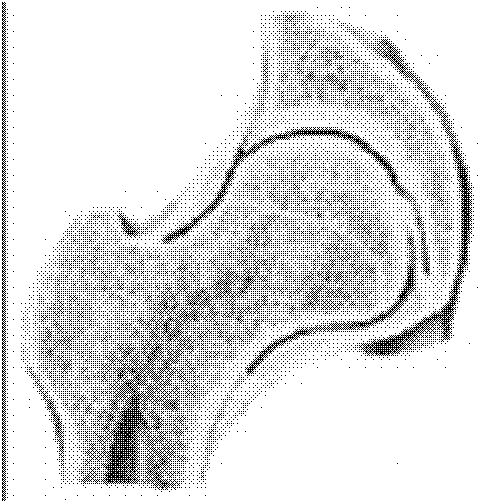Lower limb rehabilitation training robot mechanism with human-machine motion compatibility
A rehabilitation training and compatibility technology, applied in the direction of passive exercise equipment, physical therapy, etc., can solve problems such as motion interference, safety issues, and difficulty in rehabilitation training, and achieve the effect of improving motion compatibility and safety
- Summary
- Abstract
- Description
- Claims
- Application Information
AI Technical Summary
Problems solved by technology
Method used
Image
Examples
Embodiment approach 1
[0024] Embodiment 1 of the present invention is as Figure 4 As shown, the connection (wearing) between the lower limb rehabilitation training robot mechanism and the lower limbs of the human body is: the intersection of the revolving joint A and the revolving joint B of the left branch of the exoskeleton coincides with the center point of the ball and socket hip joint 23 of the human left lower limb. The rotation axis of the revolute joint C and the rotation axis of the spherical knee joint 24 of the left lower limb of the human body are parallel to each other, and the left branch is tightly connected with the upper and lower legs of the left lower limb through the strap 9 and the strap 14 respectively. The intersection of the rotation axis of the revolute joint D and the revolute joint E of the right branch of the exoskeleton coincides with the center point of the human body from the lower limb ball-and-socket hip joint 27, and the rotation axis of the revolute joint F and the ...
Embodiment approach 2
[0026] Embodiment 2 of the present invention is as Figure 5 As shown, in this embodiment, the connection between the lower limb rehabilitation training robot mechanism and the lower limbs of the human body is the same as that of the first embodiment. The difference between the second embodiment and the first embodiment is that the slider 12, the rod 13, the slider 20 and the rod 21 are removed from the robot mechanism, and the rod 11 and the rod 19 are directly connected to the ball joint H and The ball joint J is directly fixed.
Embodiment approach 3
[0028] Embodiment 3 of the present invention is as Image 6 As shown, in this embodiment, the connection between the lower limb rehabilitation training robot mechanism and the lower limbs of the human body is the same as that of the second embodiment. The difference between the third embodiment and the second embodiment is that in the ball joint H and the ball joint J, the degrees of freedom of rotation around the rod 11 and the rod 19 in the rod length direction are removed, and the ball joint H and the ball joint J The joint J respectively degenerates into Hooke's hinge joints 31 and 32 with two rotational degrees of freedom.
PUM
 Login to View More
Login to View More Abstract
Description
Claims
Application Information
 Login to View More
Login to View More - R&D
- Intellectual Property
- Life Sciences
- Materials
- Tech Scout
- Unparalleled Data Quality
- Higher Quality Content
- 60% Fewer Hallucinations
Browse by: Latest US Patents, China's latest patents, Technical Efficacy Thesaurus, Application Domain, Technology Topic, Popular Technical Reports.
© 2025 PatSnap. All rights reserved.Legal|Privacy policy|Modern Slavery Act Transparency Statement|Sitemap|About US| Contact US: help@patsnap.com



